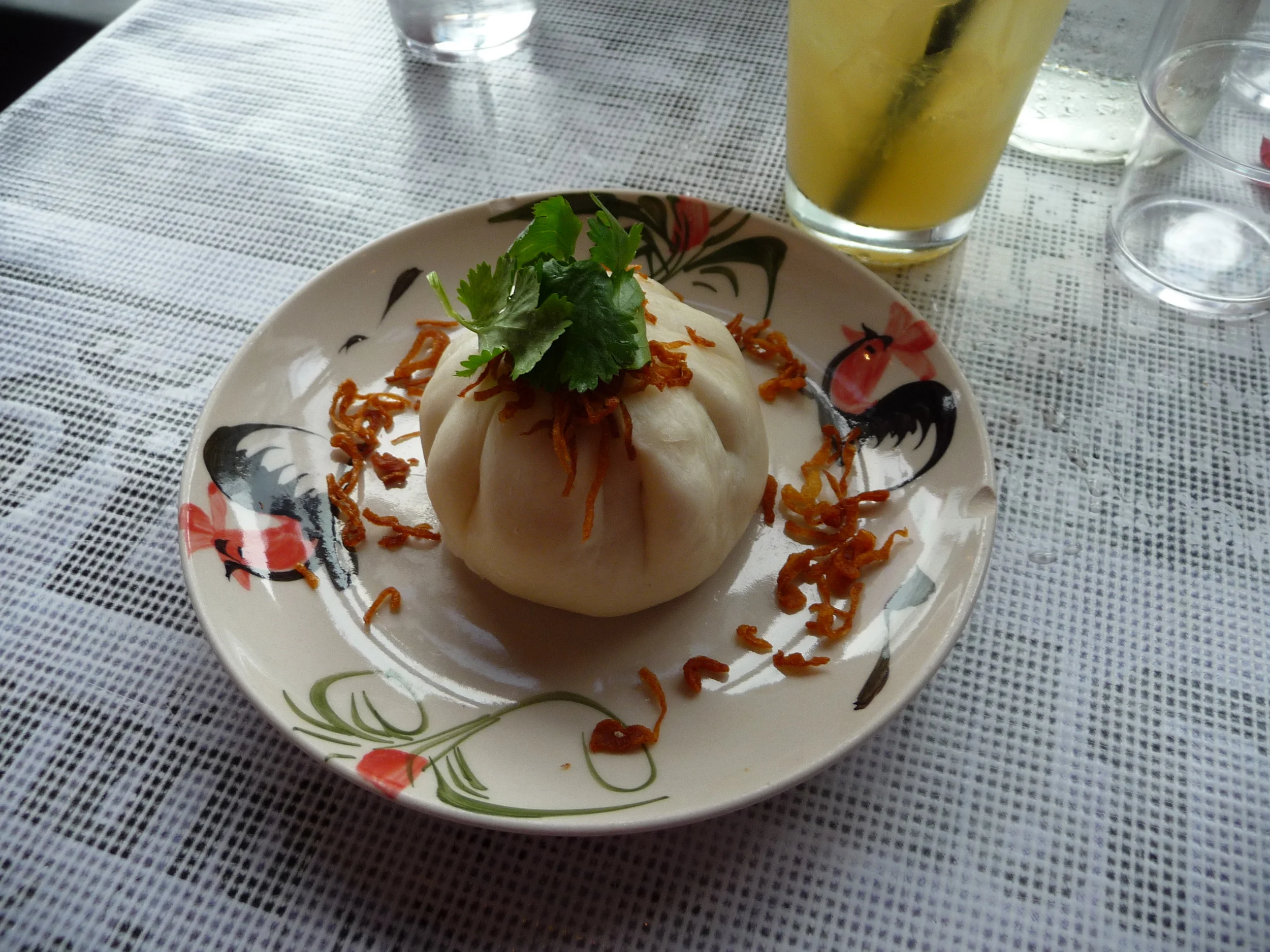So much goodness in a compact package
While the Chinese didn’t invent bread, popular lore has this handheld “hot pocket” created in the third century CE. Baozi occupy a food niche between dumplings and ravioli on one side, and breads, muffins, and pies on the other.
The characteristics of bao are:
- Sized to fit in one hand, like a sandwich
- Use of bread dough with yeast, as opposed to unleavened pasta / wonton / noodle dough
- Ability to contain juices / sauces / jellies without seepage, thanks to the use of bread dough
- Pre-cooked fillings to allow for quick re-heating
- Cooking done by steaming - never by boiling or pan-frying (some variations can be baked or pan-fried)
Photo by Joy via Flickr, CC 2.0 license
Made for meals on the go
The versatility of basic bao gives a cook all sorts of options:
- Breakfast: a traditional doushabao is filled with sweet bean paste (tasting almost like chocolate). Lianrongbao are filled with lotus seed paste. For a Western twist, how about scrambled eggs and sausage, or bananas with maple syrup?
- Lunch, dim sum, or a light dinner: the big favorite from Guangdong, cha siu bao, filled with barbeque shredded pork. From Tianjin, another popular meat-and-red bean-filled choice is goubuli baozi. Other variations include chicken, quail eggs, pickles and spices, Peking Duck, or just sauteed vegetables.
- Soup? Yes, make the soup first and then add just enough gelatin to the broth to make it barely solid. Slice out a cube of the solid soup and place it inside the circle of dough, bring the dough up to cover the soup and freeze the completed bun until mealtime. Steaming the bao will liquefy the soup, and the bread dough will keep it from leaking out. To eat, make a small opening at the top and sip the soup with a straw! The famous xiaolongbao from Shanghai and the tang bao from Yangzhou use this technique.
- Dessert bao can be made with sesame paste (zhimabao), yellow custard (naihuangbao), and sweet bean paste. Other Westernized recipes could use jellied fruit fillings like berries or apples with cinnamon, or pudding.
- Other non-traditional presentations: pizza toppings, cocktail shrimp with citrus relish, refried beans and chorizo, or even peanut butter and jelly!
Photo by Alpha via Flickr, CC 2.0 license
Bao are easily prepared at home - you can use pizza dough, bread dough, or even canned biscuit dough - and freeze well. You can usually find several varieties of bao at your local Asian grocery store, as well.
Be sure to use a bamboo stacking steamer and line each layer with wax paper to keep the dough from sticking to the bamboo while cooking. Frozen bao usually take about 10 minutes over steam to be fully cooked.



